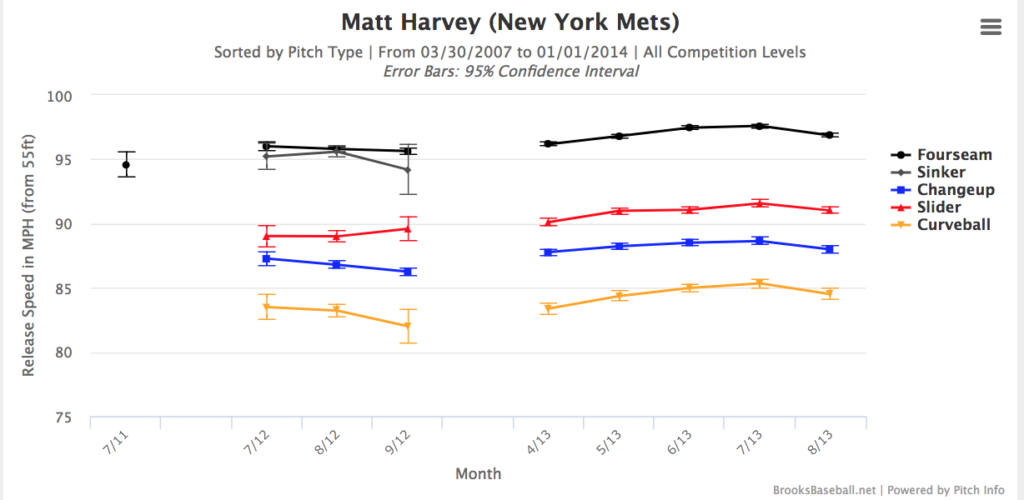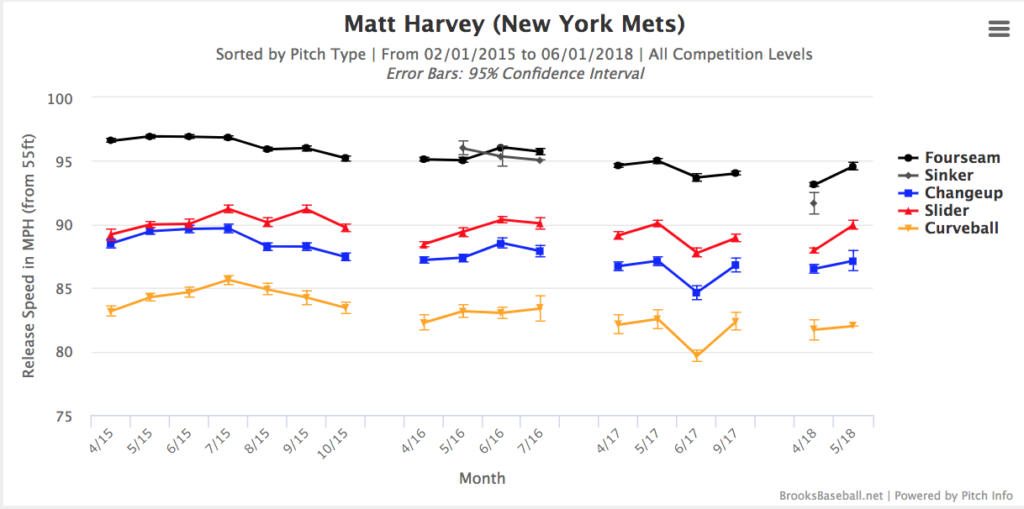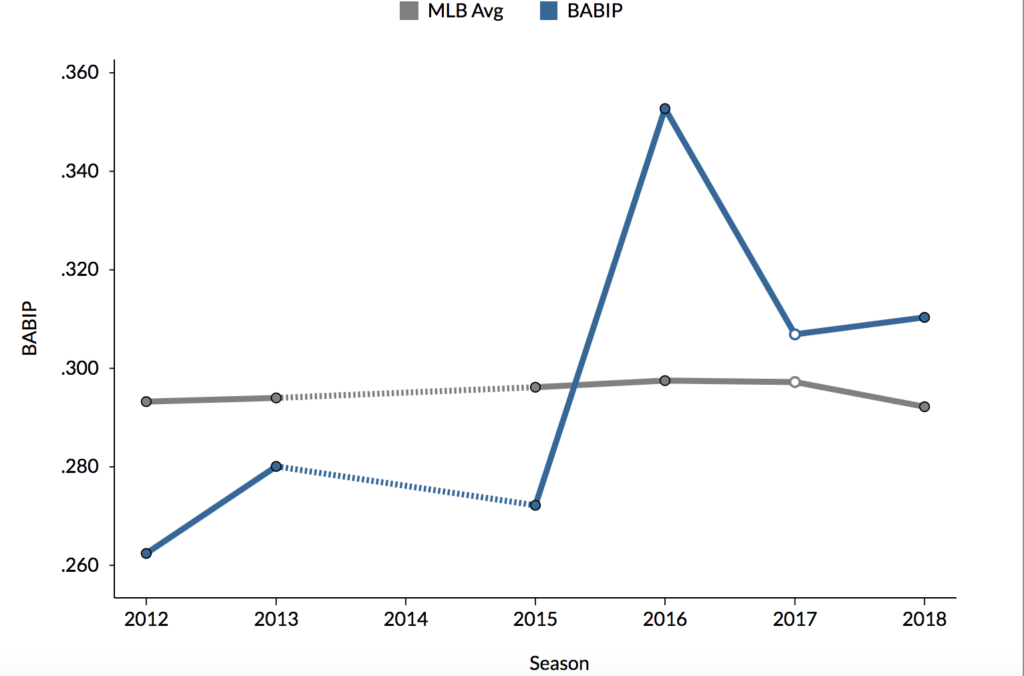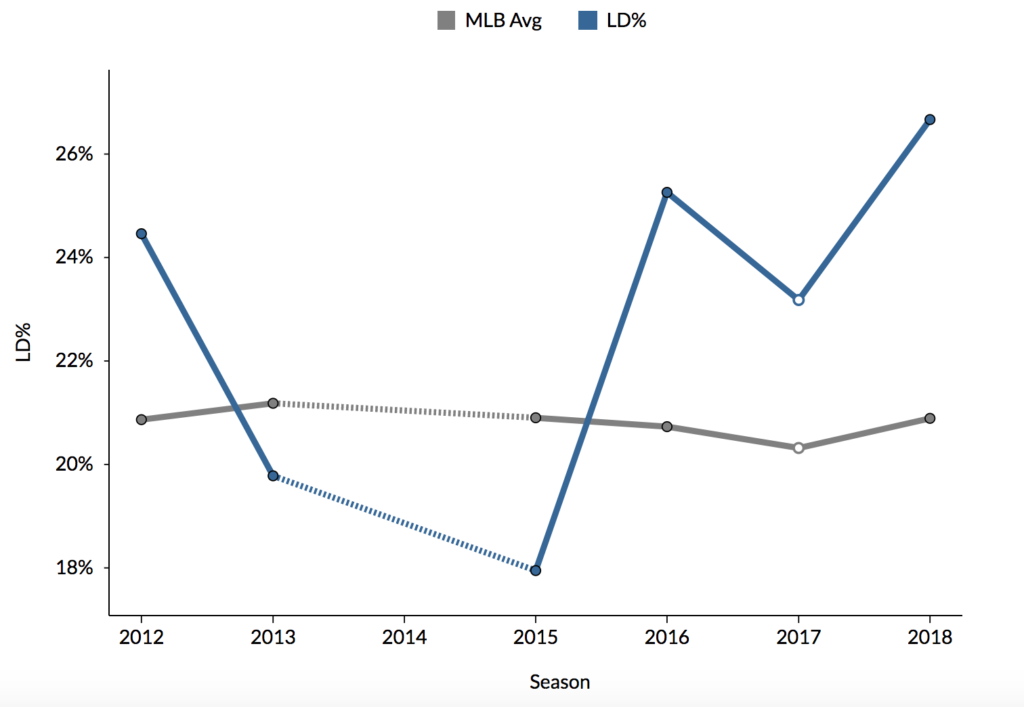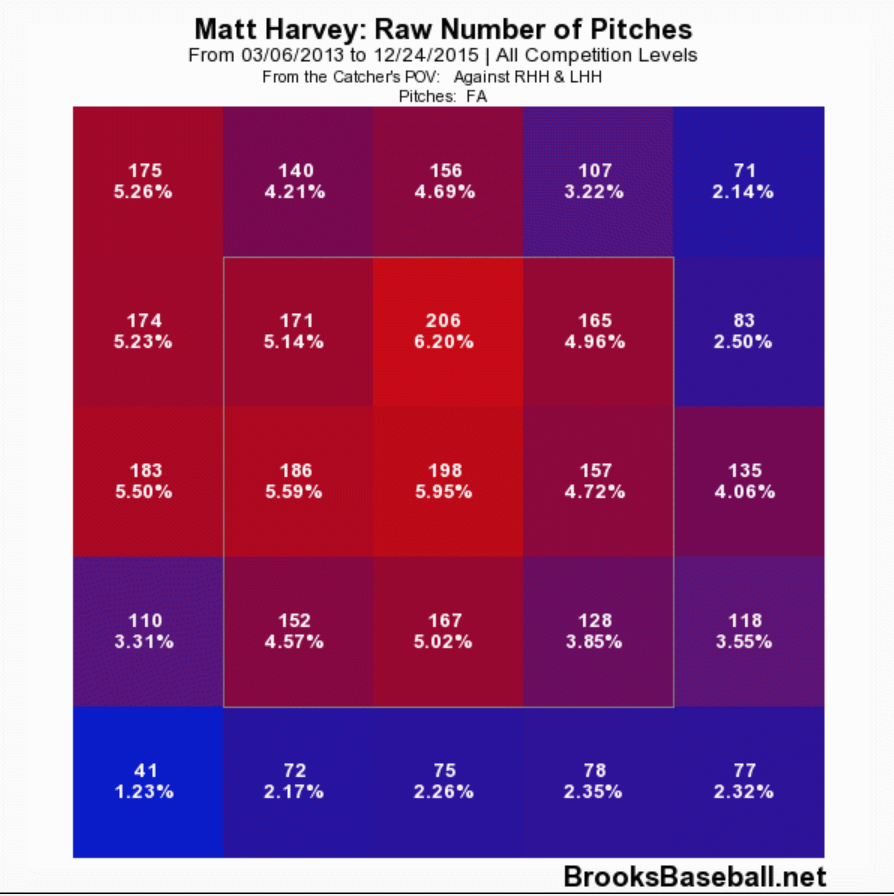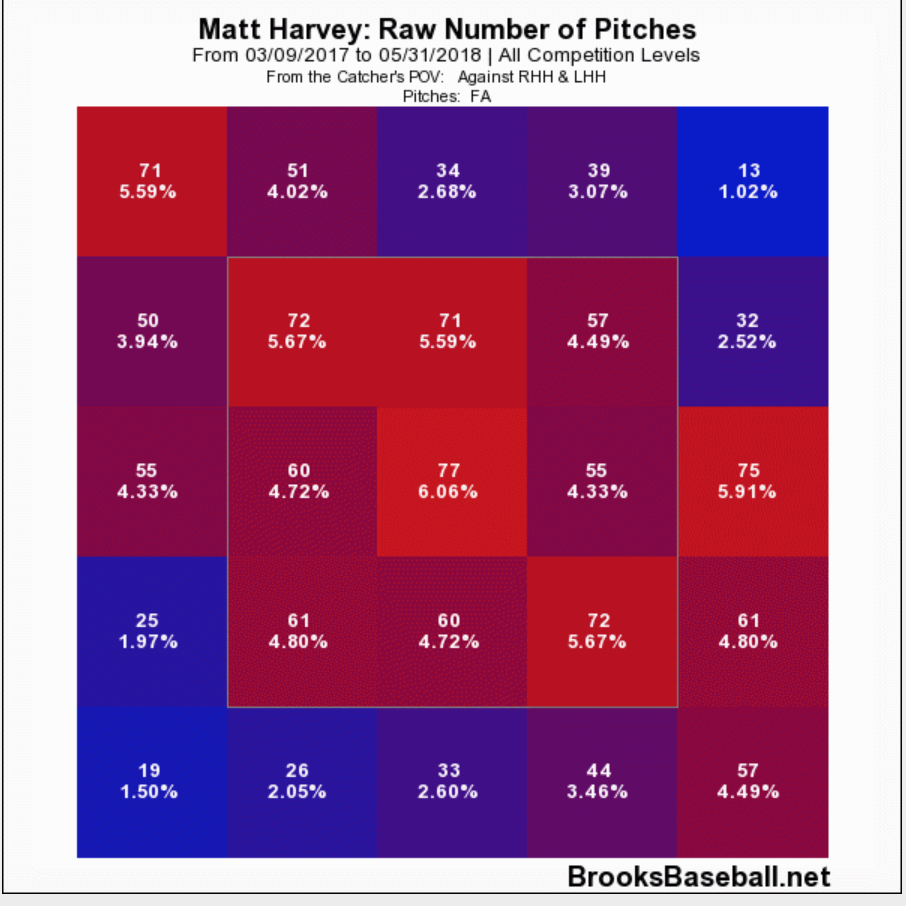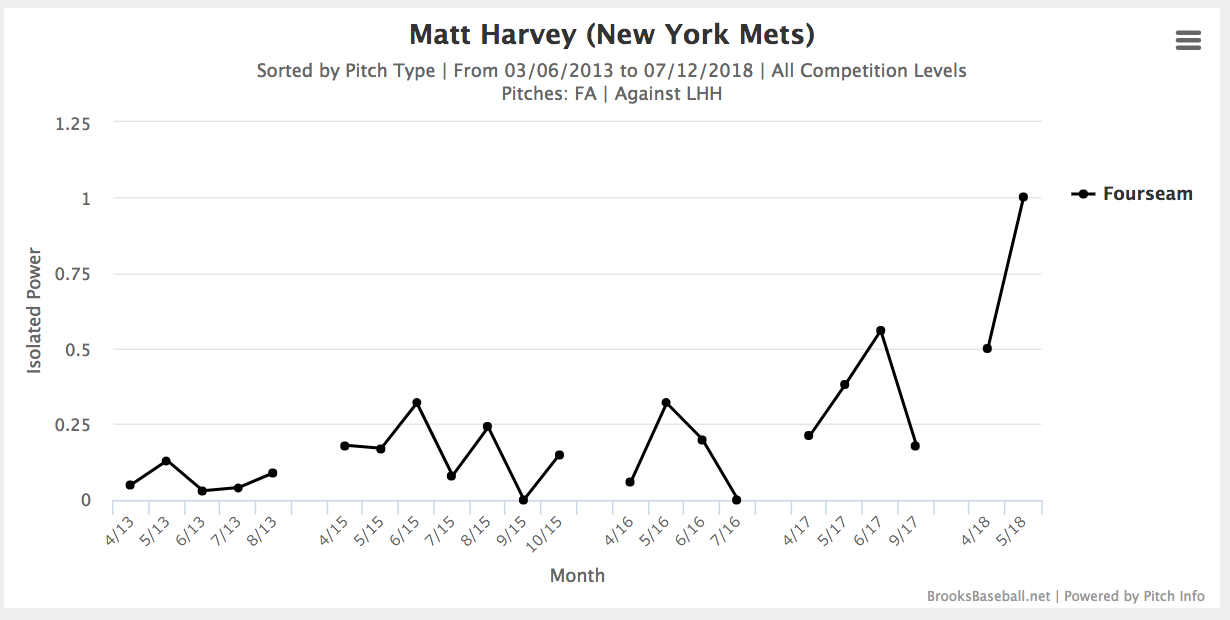Matt Harvey Analysis: What the Holy Hell Happened?
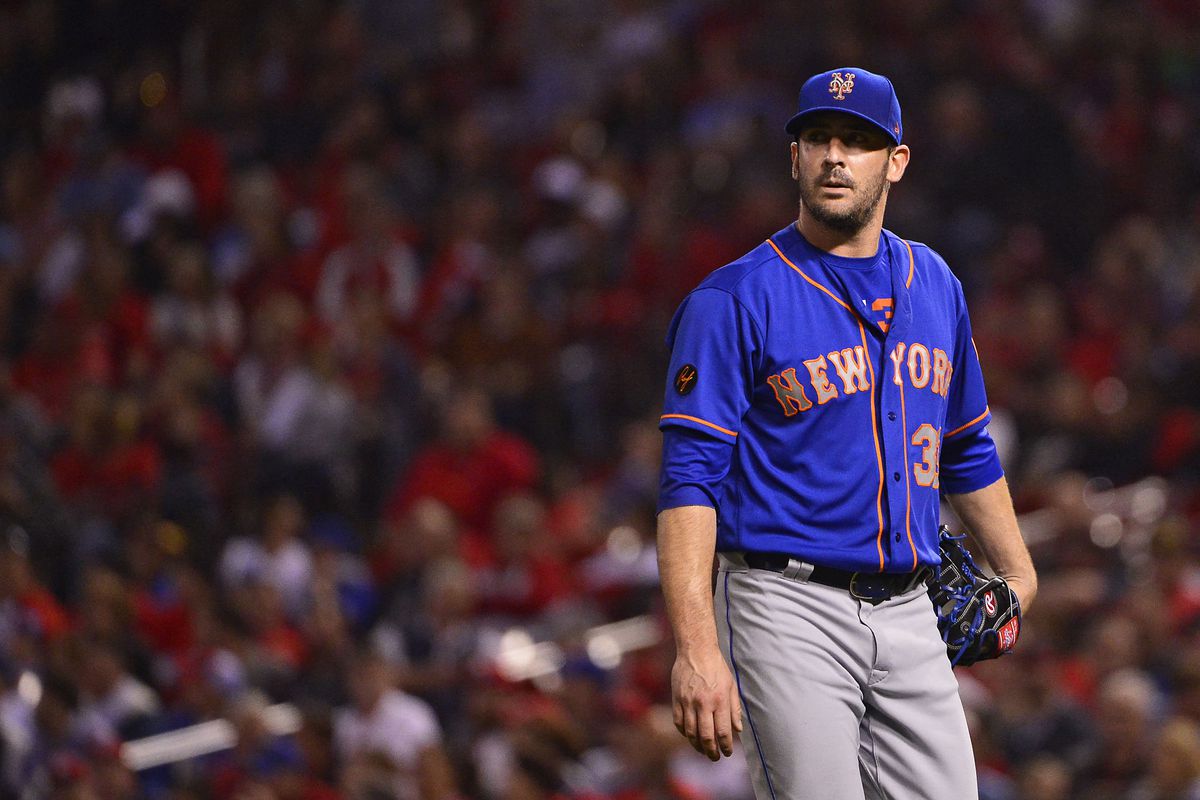
In short, I’m not sure. But I can definitely and empirically prove something did. Starting in about September 2015 and definitely by the start of the 2016 season, a Matt Harvey analysis shows that the pitcher started throwing slightly less hard, got hit way harder, got fewer swinging strikes, threw fewer strikes, got away from his changeup (in part because he didn’t have the fastball velocity) and everything that was bad in 2016 got worse in 2017.
Here’s Matt Harvey’s velocity from the start of his career through the end of 2013, courtesy of Brooks Baseball.
Harvey was consistently averaging 96 to 97 mph on his fastball before he got hurt in August of 2013 and missed the entire 2014 season after having Tommy John surgery. During this time period, he posted ERAs of 2.73 in 2012 and 2.27 in 2013, a year in which he also made the All Star team and finished 4th in the Cy Young voting. 2013 Matt Harvey was peak Dark Knight in New York.
When he came back in 2015, he was basically his old self- until the end of August. Harvey posted a 2.71 ERA for the season, seemingly bouncing all the way back from TJ, but things didn’t end so great that year and we can see on this chart that the end of the 2015 season was the start of a small but pronounced velocity decline that has had some significant implications.
Instead of 96/97, now we’re looking at 95mph, trending down to closer to 93mph this year. That might not seem like much but if you watched the movie Fastball, which you should, you’ll know there’s a very cool part where Brandon Phillips basically says he could hit .400 against 92mph fastballs for the rest of his life, but that he can barely see a ball moving 100mph. In short, there’s a big difference from just a few miles per hour.
In 2018, Harvey was averaging just over 92mph on his fastball, making him almost the definition of league average. Problem is, when you have a guy who has been overpowering people since he was 10, a league average fastball can be demoralizing- especially when the guy doesn’t know how to pitch without his old velocity.
Here’s a chart from Fangraphs of batting average on balls in play (BABIP) against Harvey, charted against the MLB average. Normally, when a hitter has an abnormally low BABIP or a pitcher has an abnormally high BABIP, we tend to attribute it to bad luck and figure things will normalize. In some cases though, the numbers really are trying to tell us something. In this case, I think they’re trying to say that hitters were all of a sudden taking better swings and making better contact off of the former Dark Knight.
Need some evidence for that claim? Here’s the line drive percentage against Harvey over time, compared to MLB average. I think the story here is pretty clear.
Brooks Baseball lets you look at everything from horizontal and vertical movement to spin axis to pitch location and the story is kind of the same across the board. Starting in earnest in 2016, everything Matt Harvey threw got a little bit straighter, a little bit slower, a little bit flatter, and missed by a little more. This is especially true against left-handed hitters.
In 2013, lefties hit .178/.216/.240 off him. In 2015, after Tommy John but before his struggles really began, they hit .226/.288/.388. In 2017, well after things had turned for the worse and after Harvey suffered through Thoracic Outlet Surgery, a major procedure that involves removing part of a rib, left-handers hit .331/.426/.599. In just 16 plate appearances in 2018, they’re hitting.333/.438/.667.
The fastball appears to be the main culprit in his struggles. As we covered, velocity and movement have degraded a bit but the real problem is that he’s missing inside and over the plate much more frequently than when he was successful. In recent years he’s leaking a lot more heaters in the lower inside part of the strike zone against left handed hitters, which is just where they like it.
Here’s Havery’s pitch location on fastballs to all hitters when he was dominating the league. There’s a fair number of pitches right down the middle but those get-me-over fastballs could be on 3-0 or to start an at bat, I wouldn’t read too much into that.
Here’s the same chart from 2015- present:
The differences here are stark. Harvey has been missing spots a lot more and he’s been doing it with inferior stuff. It’s not surprising that the results have been bad.
One more chart for you. Here’s a graph of Isolated Power (ISO) of lefties against Harvey over the course of his career.
I don’t think anyone can definitively say Harvey pitched too many innings in his first season back from Tommy John Surgery and it ruined him. However, he did pitch more innings in that bounce back season than almost any pitcher ever and after that, things weren’t the same. I think the thoracic outlet syndrome that was corrected in late 2016 might be the bigger culprit actually. It’s hard to tell exactly when he began suffering symptoms of that but it’s clear that his performance declined prior to the surgery and never recovered after it.
There’s no grand catastrophic moment that sticks out and no single thing we can point to as the reason a former capitol-A Ace sunk so low that he was designated for assignment in May after refusing a minor league assignment at just 29 years old. It’s just a bit of everything, really. His velocity declined and he started missing spots- that’s a very bad combination- and he never made any adjustments to account for it.
Despite his off-field controversies in New York over the years, there’s still reason to believe in Harvey. Harvey Day was awesome when it was awesome and the talent that fueled it still lives somewhere. Finding a new team that will give him a shot and work with him on adapting to his new reality could rekindle that magic. There’s no reason that the 29 year old should be “done” actually. He can reinvent himself and have some success, a la CC Sabathia, but he’s working with 4-5 more mph than the current version of CC. He may never win that Cy Young award that seemed so close in 2013, but he should get another few opportunities outside of the big Apple.
-Max Frankel

